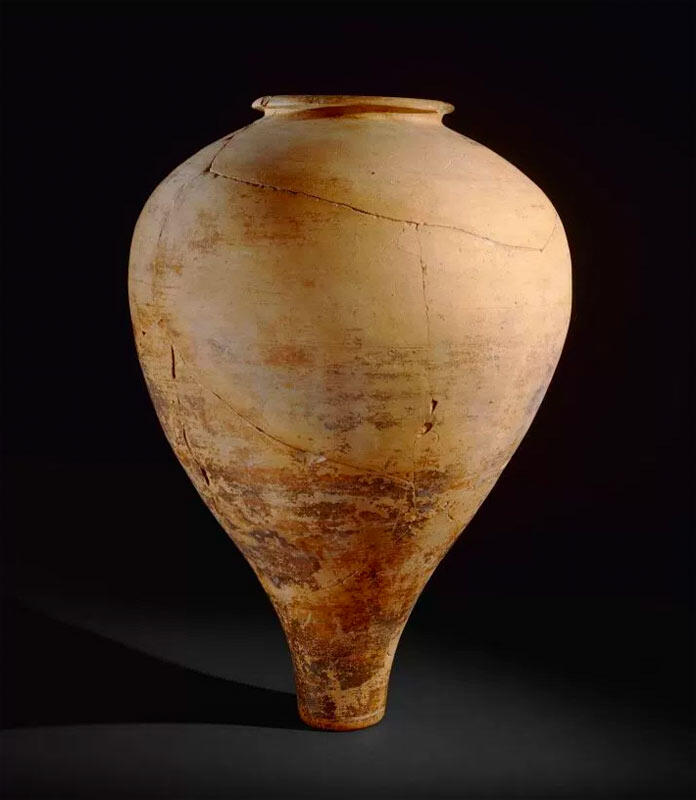June 5th, 2017
What a glorious jar! Perfect in shape, form and function, tapering to a thin base that sat solid in the earth. The image is published in a blog entry by Alessandro Ceccarelli of the Two Rains Project at the University of Cambridge, source of some of the most interesting recent research on the agriculture and demise of the ancient Indus civilization (see for example Cereals, calories and change: exploring approaches to quantification in Indus archaeobotany).
"I spend a lot of time looking at fragments of pottery, thin-sections and ceramic powder samples. I am combining technological and compositional methods to study ceramic industries, including thin-section petrography, XRD, FTIR, WD-XRF and pXRF. Combining these methods with traditional morpho-stylistic analysis, I am investigating the production (chaîne opératoire) of artefacts to understand synchronic and diachronic cultural behaviour" writes Alessandro. The Two Rains project is dedicated to using these kinds of advanced scientific methods, many only becoming possible now for the first time, to learn many new things about the complexity of interlocking circumstances four thousand years ago, just like modern times.
Alessandro is also working on a game, The Treasure of the Unicorn in his capacity with the Victoria and Albert Museum in London, and National Museum of Oriental Art ‘Giuseppe Tucci’ in Rome - incidentally, another sign of the growing Italian presence in ancient Indus studies. The Two Rains Project, which is focussed on the question Does climate change really cause collapse? is funded by the European Research Council, and a joint undertaking with the Department of AIHC and Archaeology at Banares Hindu University. Much of the research thus far, while dealing with climate issues, has had to do with bringing to light a much denser and varied agricultural regime across the civilization. People were smart enough to adapt to changing rivers and weather patterns.
We look forward to Alessandro's game, and the many discoveries and analysis to come.
Blog entry Beyond Indus Ceramics.
Image: Indus Storage Jar from Mohenjo-daro. © The Trustees of the British Museum

